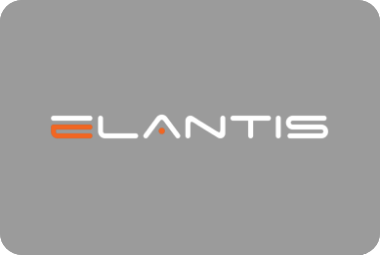Employee experience is a top priority for many human resources professionals. It is also one of the most challenging areas to improve, as it requires a holistic approach that emphasizes employee engagement and satisfaction. HR automation can help your organization address these issues by automating many of the tedious tasks involved in managing your workforce. In this article, we will explain how HR automation works and discuss some ways it can benefit your organization.
The Importance of Employee Experience
Employee experience is critical to an organization’s success. It affects productivity, retention, and satisfaction. Employee experience can be defined as the sum of all interactions that employees have with their organization and its products or services. The goal of employee experience is to make these interactions positive so that employees feel valued, respected, and supported by their employers in a way that makes them want to stay with the organization for a long time.
How Automation Can Improve Employee Experience
HR automation is the process of using technology to streamline various aspects of human resource management. From collecting employee data, to scheduling time off requests and managing employee records, HR automation can save organizations time and money by reducing manual labour costs associated with traditional methods of human resource management. As many organizations try to stay ahead of the curve and maintain stability, process automation is becoming an attractive option for improving productivity and efficiency—without additional investments in human resources.
Employee experience is a critical component of employee engagement. When employees feel like they are being treated well, they are more likely to stay with the organization and contribute their best work.
One way HR automation can improve employee experience is by automating processes like onboarding, which allows HR teams to quickly get new hires up to speed on policies and procedures without having to spend hours manually entering information into spreadsheets or other tools.
Another benefit of automation is that it allows HR teams to manage benefits administration more efficiently than ever before. Automated systems allow employees who are eligible for certain benefits (such as health insurance) the ability to sign up for them online without needing an intermediary—this saves both time and money, in addition to improving employee satisfaction levels overall.
Automating these processes helps reduce errors that can occur when relying on manual tracking systems, while freeing up more time for HR personnel to focus on strategic more strategic tasks. Additionally, automating HR processes allows organizations to respond to changes quickly as they happen or even anticipate them before they become a problem.
Using Automation for Data Collection
Data collection is an integral part of successful human resource management. By utilizing technology to collect employee information, businesses can gain valuable insights into the workforce and use this data for making informed decisions about staffing, job roles, training opportunities, and more.
Technology-driven data collection makes it easier to track changes in employee performance or other key metrics over time that might otherwise have gone undetected. Additionally, integrating systems for data collection allows organizations to capture detailed records from multiple sources such as payroll, surveys, and attendance records. This helps ensure accurate reporting on a wide range of HR activities while providing a comprehensive picture of the organization’s workforce.
The ability to easily access up-to-date employee information also simplifies compliance with government regulations like tax laws or labour laws that require specific documentation related to employees.
Time-Saving Automation in HR Processes
Recruiting and Onboarding
Automated recruiting and onboarding processes help businesses save time when hiring new employees by streamlining these processes. Through automation, employers can quickly review resumes, send out job offers, and provide orientation materials without having to manually contact each candidate or go through a long paper trail.
Automation also allows employers to easily track employee progress during the onboarding period, so they can ensure that all necessary paperwork is completed accurately in a timely manner.
Internal Communications
Communication automation features can help organizations achieve better engagement with their employees. Automated messaging tools allow employers to quickly send out notifications regarding policy changes, meetings, deadlines, and other important information in a timely fashion. This helps ensure everyone is informed of the latest developments within the organization while eliminating manual tasks associated with traditional methods of communication such as emails or memos.
Time Off Requests and Leave Administration
Automation for scheduling time off requests helps reduce administrative workloads associated with managing employee leave. Automating this process eliminates the need for manual tracking of vacation days taken or sick leave requested; instead, it automates these processes while providing employers with real-time updates on who is taking what types of leave and when those leaves will end. This helps organizations remain compliant with labour laws while ensuring employees are given their due benefits without any potential for human error.
Reducing Error Rates
HR automation can help reduce error rates and ensure accuracy and quality control. By automating processes such as data entry, record keeping, payroll calculations, and other HR operations, organizations can reduce human errors that could lead to costly mistakes.
Automation also allows employers to standardize their procedures across multiple departments or locations—ensuring all employees adhere to the same rules regardless of location. This helps prevent discrepancies in policies or expectations between different parts of the organization while helping maintain consistent standards.
Challenges and Considerations for Implementing Automation
Before you begin to implement automation in your HR department, it is important to acknowledge the potential challenges and concerns that may arise. While automation can help you save time and money, it also requires some upfront investment to get started. Additionally, there are other considerations you should consider when implementing automation:
- How much time do we have? If your organization is growing quickly or has a high turnover rate (which often leads to hiring more employees), then implementing automation may be challenging because of how much work there is for HR professionals on a daily basis.
- What budget do we have? Many organizations do not have unlimited budgets for new technology investments like HR automation; therefore, some research must be done before making any automation decisions.
Best Practices for HR Automation
If you are considering implementing HR automation, here are some best practices to help ensure your success:
- Ensure that everyone involved in the process is on the same page. Make sure that all stakeholders have a clear understanding of what is being automated and how it will be implemented.
- Do not forget about security. Make sure that all passwords and sensitive data are stored securely, so they cannot be accessed by unauthorized parties. Additionally, make sure that any sensitive data (like social insurance numbers) are encrypted.
Implementing HR Automation
HR automation is an effective way to improve employee experience and engagement. It can help your organization reduce costs, increase productivity, and improve the quality of your services.
However, it is important to note that HR automation is not a one-size-fits-all solution for every organization. Each organization has its own unique needs and circumstances that must be considered when deciding whether to implement an automated system for managing HR processes.
As experts in automation, Elantis has extensive experience with both Nintex Automation Cloud and the Microsoft Power Platform. We use these platforms to solve business problems, streamline processes, integrate systems, and improve productivity. We have implemented business process automation solutions for 50+ customers in the past five years. This broad expertise allows us to make unbiased recommendations and tailor our solutions to your specific requirements.
If you are interested in learning more about how you can automate HR processes in your organization, Elantis can help. Reach out to us to schedule a consultation with one of our automation experts.

























